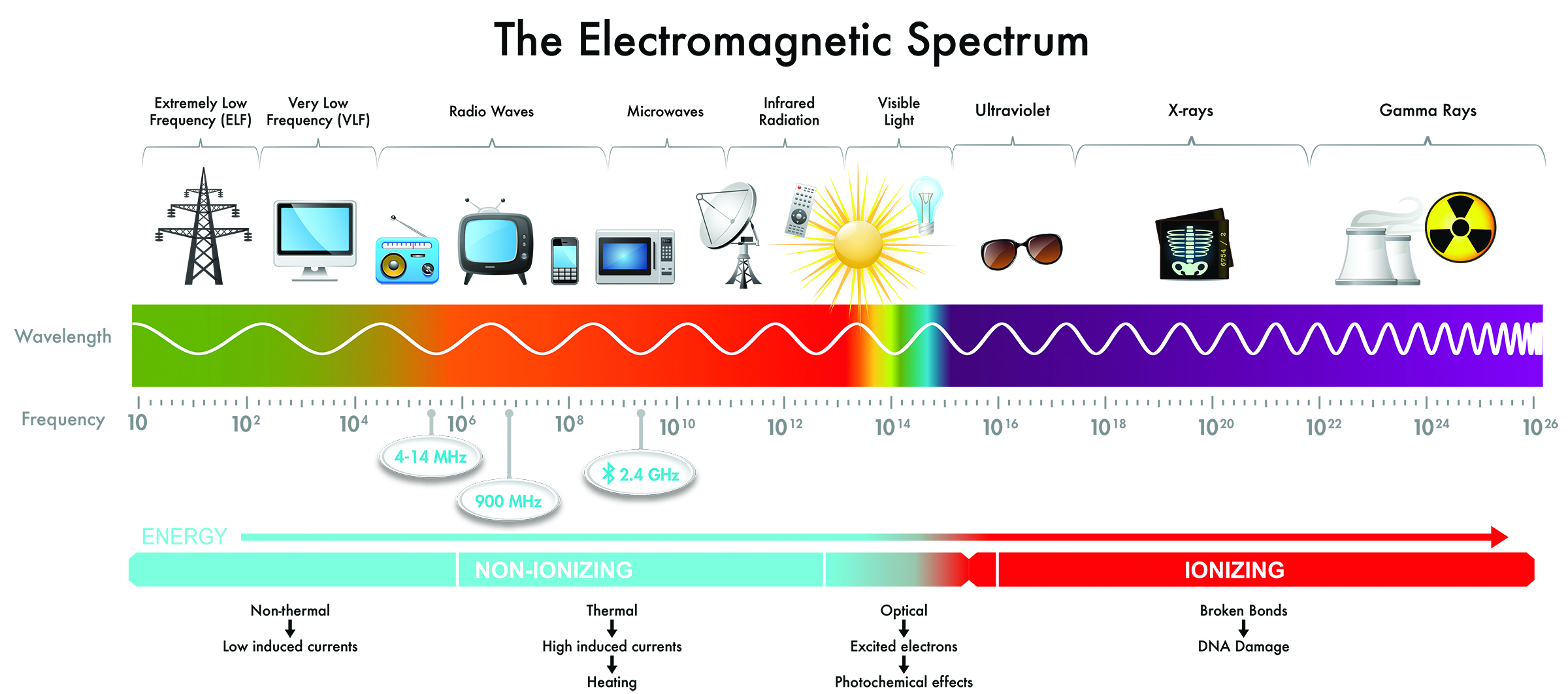Well being Effects of EMF Radiation

The radiation from RF-EMF can cause damages to DNA and tissue, and disrupt the blood-brain barrier. These are real-world effects, and ARPANSA is actively involved within the EHS communities, medical professionals and researchers. The agency will continue to study research related to the health effects caused by EMF radiation.
RF-EMF causes DNA damage
The exposure to electromagnetic fields created by humans (EMFs) is associated with DNA damage as well as health consequences. EMFs can affect intracellular ionic concentrations, which are crucial to maintain the electrochemical balance of cells. emf radiation can disrupt cell homeostasis, resulting damages to the DNA. Moreover exposure to EMFs is also associated with the production of free radicals as well as reactive oxygen species (ROS).
Exposure to RF-EMF radiation has been linked to changes in male germ cells' development. This results in the differentiation of the germ cell into spermatozoa as well functioning maturation when the spermatozoa move throughout the epididymis. To investigate the effects of RF-EMF on male germ cell development A specially designed waveguide machine was designed to expose non-restrained mice to RF EME with a dose of 2.2 W/kg.
In a study that was conducted recently, researchers discovered that exposure to RF-EME caused an oxidative DNA damage to the spermatozoa. Sperm DNA fragmentation increased by 18% following an entire week of treatment and by 23% after 5 weeks. Furthermore, DNA damage in mitochondria was observed by measuring the level of a biomarker, 8-hydroxy-2-deoxyguanosine (8-OH-dG).
However emf radiation isn't yet considered to be a carcinogen. But, numerous studies have revealed that RF-EMF exposure can impair DNA integrity in a range of cell lines. In one of these studies, scientists exposed Vero cell lines to EMF of 100 Hz for about 45 minutes. They assessed DNA damage for at 48 hours following exposure to determine if the exposure had a negative effect on DNA integrity.
RF-EMF causes tissue heating
While the effects of RF-EMF are typically thought to be thermal, some studies have demonstrated that non-thermal influences are also evident. emf radiation symptoms may account for some of the unsolved issues in epidemiological studies on EMF hypersensitivity. It is therefore important to take into account non-thermal effects when conducting a systematic review.
Effects that are not thermal from RF-EMF could occur at the cell membrane. This is a field of research that has been extensively studied. Particularly the electrochemical behavior of cell membranes is being studied. Current understanding suggests that energy generated by RF-EMF greater than 1 MHz gets transferred into the tissues through dielectric dissipation and ionic discharge. Previous theoretical analyses indicated that the energy transfer to tissues could be as high as 200 kV/m.
The electric properties of tissues are regulated by the composition and distribution of water molecules, ions, and other molecules in the body. This determines how absorbent EMR RF is by various tissues. Organs with greater conductivity are likely to absorb more of the field, and thus cause more of an impact. This is why the level of heat generated by tissue does not increase steadily between the outside and inside the body and is only noticeable in hot spots. Bone and fatty tissue are less susceptible to RF heating than other tissues, because they are low in water content.
The depth of penetration of the electromagnetic field is determined by the frequency and strength that the electromagnetic field has. Muscle tissue absorbs more field energies than the other tissue and converts it into heat more efficiently. Usually, the depth of penetration for RF EMF is determined by millimeters (mm). The higher the frequency, the more shallow the penetration.

RF-EMF causes blood-brain barrier disruption
Researchers have found that RF-EMF can disrupt the blood-brain barrier changing sleep patterns as well as neurotransmitter levels. In addition, the effects that EMF in brain activities are associated with neurodegenerative disorders. For instance, EMF from mobile phones can affect electroencephalogram activity and sleep patterns, as well as the actions of nitric Oxide and xanthin oxidase.
Researchers from the Vienna University have studied the effects of RF-EMF exposure on brain cells. They also looked at what effects ELF EMF on the nervous system. Although the cellular mechanisms aren't completely comprehended, there is a clear relationship between exposure to ELF EMF and myelin depletion. This relationship might account for the electro-hypersensitivity symptoms of electro-hypersensitivity. However, there are proven methods for regenerating myelin within the brain.
Researchers have observed that exposure to the frequency of 900 Mhz EMF caused a rise in the permeability of the BBB and raised the signs of neuronal injury in rats. They also observed an increase in the release of albumin to neurons. Additionally, they observed that after 30 minutes of exposure to 900 MHz 99mTcMIBI increased its penetration in the cortex. But this effect didn't happen with Evans blue-based injections.
However, RF-EMF has no clear mechanism to disrupt the BBB. The evidence suggests that nonthermal EMF exposure may increase erythrocyte cell membrane permeability. This could alter the BBB and increase calcium ion efflux. Additionally, the presence of a 99mTc-MIBI radiotracer in the brain is also connected to increased permeability of BBB.
